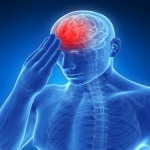
Collision and contact sports such as football, rugby and soccer have begun. With these types of sports, concussion topics are often discussed. Tim Cummings, a Physical Therapist from Elite Sports Medicine & Physical Therapy is our guest blogger this week and explains advancements in rehabilitation for athletes that have suffered from a concussion.
As a physical therapist who works in an outpatient orthopaedic clinic, I spend a good majority of my day dealing with injuries to muscles, tendons, joints and ligaments. But recently, my career has taken an interesting turn to help patients deal with an entirely different part of their body – the brain.
Over the past year, I have had the honor and privilege of developing an evidence-based, post-concussion protocol for patients I see suffering from post-concussion syndrome (PCS). PCS refers to a group of symptoms experienced after an individual suffers a concussion, typically varying forms of headaches, dizziness and nausea.
What we now know is that a concussion primarily affects the vestibular system; the system that connects your ears and eyes to your brain, telling it where your body is in space. When this system is disrupted, simple things like note taking, playing video games, riding in a car, or walking down the aisle at a grocery store can provoke debilitating symptoms.
The old advice to “sit in a dark room and rest” until you recover from a concussion is out of date. The sooner you can begin to rehabilitate the vestibular system, the sooner you will see your symptoms subside.
In the clinic, we initially take a PCS patient through a specific series of tests we call the “Vestibular-Ocular Screen”. The results from this test give us a pathway to follow as we recondition the vestibular system and restore our patients’ abilities to engage in both normal activities of daily living and various sports.
Any athlete attempting to return to play should take particular care to avoid returning to their sport until all of their PCS symptoms have subsided. Returning to sport prior to this time makes the athlete more susceptible to sustaining a concussion with even sub-concussive-level forces. This situation is referred to as “Second-Impact Syndrome”, a more severe form of PCS. Symptoms of Second-Impact Syndrome can include brain swelling, brain herniation, and in some cases, death.
If you are suffering from PCS and have not gone through a vestibular rehab program or return to play protocol, don’t wait any longer! The help you need is available here in Kansas City!


